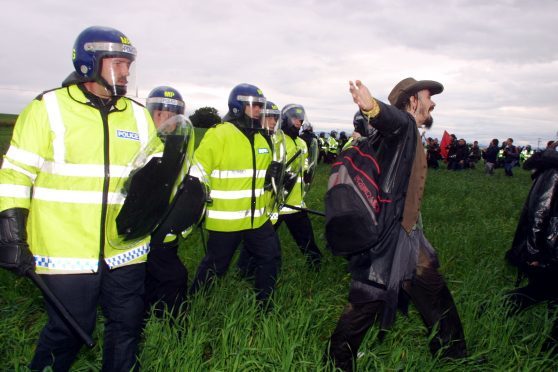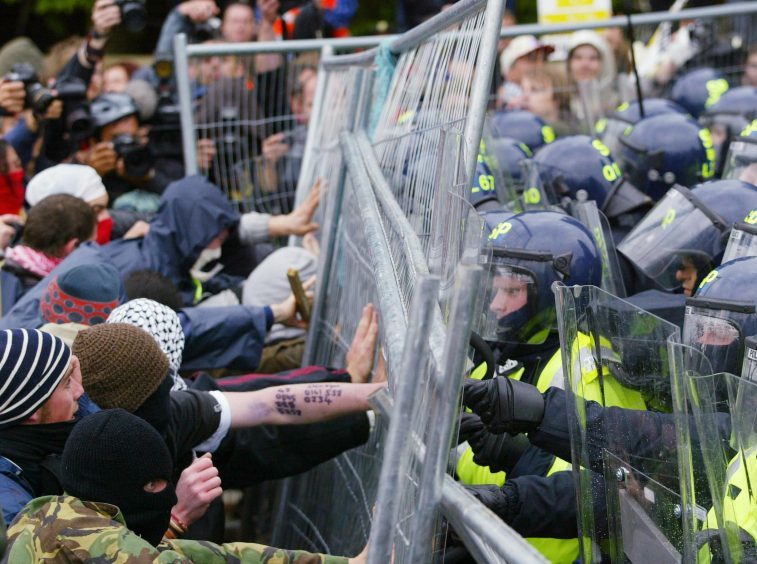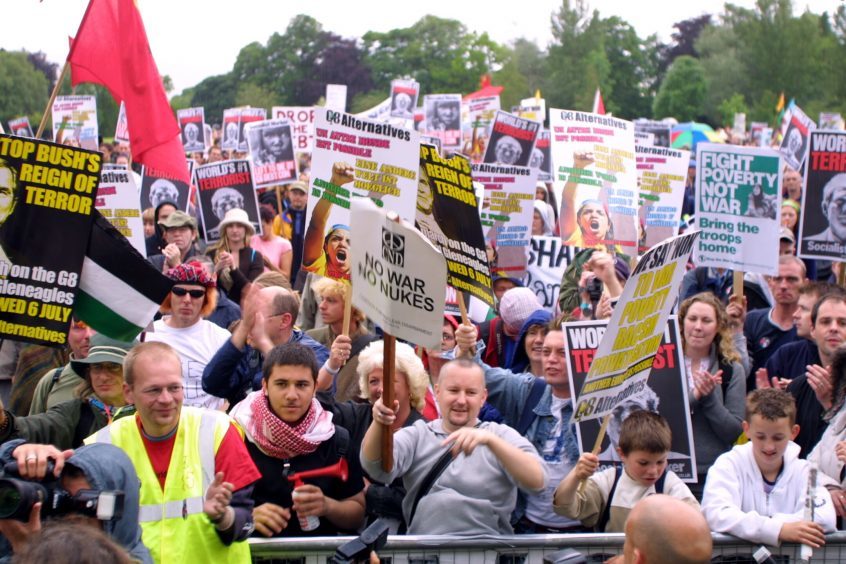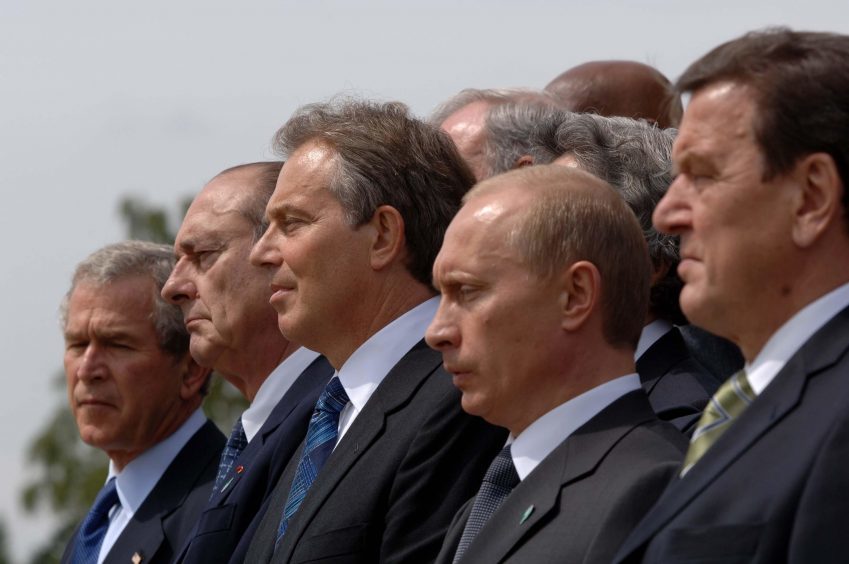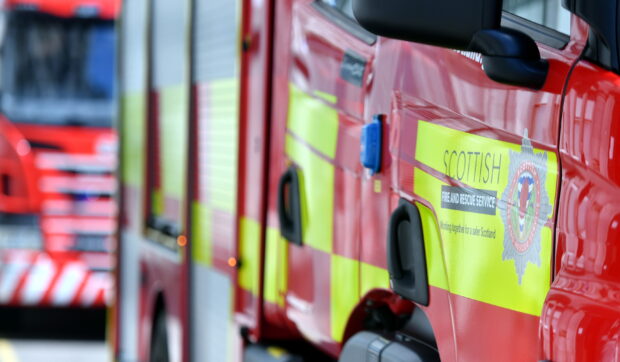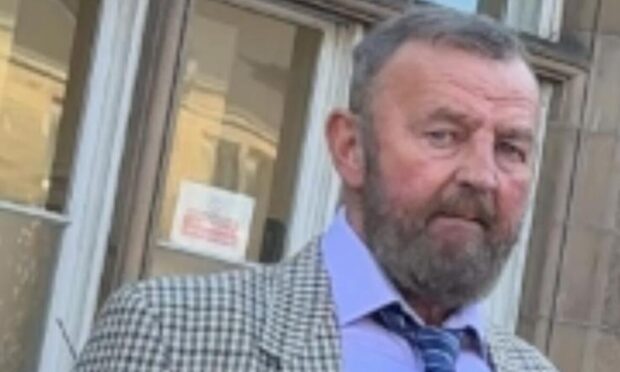A Perthshire meeting of world leaders which sparked violent protests across Scotland is to feature in a new documentary about the history of policing.
The 31st G8 summit, which was held at Gleneagles in 2005, sparked marches and protests in Auchterarder, Edinburgh, Glasgow and Stirling, and resulted in hundreds of arrests as activists and riot police clashed.
The event will feature as part of the third episode of The Force: The Story of Scotland’s Police, which charts the progression of the service from its origins 400 years ago, when James VI of Scotland decreed every parish should have two constables, to the modern day.
The documentary will examine policing practices past and present and meet the officers behind the uniform, telling their stories and highlighting how their roles have changed through the years.
The first episode, which will be broadcast on Monday night, focuses on the role of constables, which make up almost 80% of the 17,000 officers in today’s Scottish police force.
The second episode examines the evolution of police detective work, from its early beginnings in the 19th century to the landmark cases of the 21st century.
Officers will recount their memories of infamous cases including the 1977 World’s End Murders and the kidnap and murder of four little girls by serial killer Robert Black, as well as discussing the impact of technological advances such as forensic science and DNA.
The final episode will look at policing through times of social change – from the mob rule of the 18th century through to the national unrest during the 1984-85 miners’ strike and the violence of the G8 summit protests.
Michael McAvoy, head of documentaries at STV Productions, which made the programme for the BBC, said: “The Force: The Story of Scotland’s Police reveals tales of personal sacrifice, groundbreaking forensic science, blatant sexism, tenacious detective work, horrifying crimes and outstanding bravery.
“However, we also had excellent access to today’s police force so the series gives viewers a unique perspective on the challenges that our modern police face every day.
“Television viewers in Scotland have been entertained over the years by fictional police in dramas like Taggart and Rebus but with The Force they will, at last, get to see the reality of how Scotland has been policed.
“I’m sure they will see that the reality is even more captivating than the fiction.”
The Force: The Story of Scotland’s Police airs on BBC One at 9pm.
